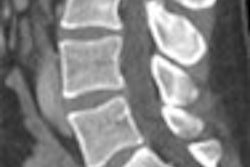At Johns Hopkins Hospital, demand for CT services has never been greater. In 2005, the Baltimore hospital performed more than 50,000 CT body scans and expects to handle at least 8,000 more procedures in 2006.
The rise in CT's popularity as a diagnostic tool, and the advance of CT itself with multidetector technology, has created more pressure on radiologists and technologists to process and interpret greater volumes of information, while returning completed studies to referring physicians more quickly. As a result, efficient workflow has become more of an issue in centralized 3D laboratories that handle image processing, interpretation, and report generation.
"Each of the steps -- from patient preparation to data acquisition to postprocessing -- needs to be done well to make the process work efficiently," said Dr. Elliot Fishman, director of diagnostic radiology at Johns Hopkins Hospital's department of clinical radiology. Fishman discussed the role of 3D labs in improving CT efficiency at Stanford University's International Symposium on Multidetector-Row CT in San Francisco last week.
Johns Hopkins' four main facilities -- the hospital, cancer center, ER, and outpatient facility -- have CT capabilities ranging from 16- and 64-slice scanners, all capable of performing 3D reconstruction "on the fly," Fishman said. There is also a central 3D lab with a number of workstations for 3D postprocessing and image review.
Who handles the processing -- be it the radiologist, technologist, or both in tandem -- is a key workflow issue. For the past 20 years at Johns Hopkins, the radiologist has been the driver, handling all postprocessing, selection of key images for referring physicians and PACS storage, and report generation.
"In order to do a successful 3D program, you need to be hands-on," Fishman said. "When I say 'It needs to be hands-on,' I mean it needs to be hands-on -- from skin to bone to muscle. If someone image-renders for you, you will see his or her images; you won't see any of your own. You'll read specifically what they see."
The Stanford model
At Stanford University in Stanford, CA, the 3D lab takes a different approach to optimizing workflow and postprocessing. Dr. Geoffrey D. Rubin, chief of cardiovascular imaging, said Stanford makes greater use of its technologists for measurement documentation and reports, while physicians direct the visualization for primary interpretation.
The MDCT data is taken from a PACS or CD brought to the reading room for postprocessing, volume rendering, curve reformations, 4D analysis, measurement, and simple segmentation. Stanford's 3D lab has five full-time 3D technologists, one software engineer who creates databases, and one administrative assistant. The server is based at Stanford Hospital and can be accessed from remote locations that are connected to the network.
"The network can access the server, and the server can have multiple datasets up simultaneously," Rubin said. "It is a very efficient model, because you can put a lot of computing power in one place and recognize that a lot of individual workstations only require (the server) to do something for very short bursts of time."
Stanford has 41 written visualization protocols (25 for CT and 16 for MRI) and 49 separate prescribed measurement protocols based on clinical indications.
The greatest challenge, Rubin said, is keeping track of all the exams that need processing and triaging urgent exams that need priority attention. The goals are "consistent and compete processing of all cases, temporal tracking of the measurements, and efficient and accurate transfer of the data to radiologists for clinical reports and archiving."
To achieve this goal, Stanford developed its own internal software that monitors its PACS for certain exam types requiring 3D processing. "The technologist selects the exams to process and logs their progress using this Web-based interface that automatically queries PACS and updates in real-time," Rubin said. "It allows technologists to pick cases as they go, maintain the appropriate workflow, and make sure nothing slips through the cracks."
Experience-based approach
Both Rubin and Fishman agree that radiologists and technologists are, indeed, important contributors when dealing with large MDCT datasets. "I couldn't agree more that in order to fully glean the benefits from this data, radiologists need to get their hands on the mouse and control this," Rubin said, "But there is a lot of time spent in documenting the 3D findings and quantifying them, and having the consistent product for 3D visualization, regardless of which physician is on any given day."
Community-based radiology practice Quantum Radiology Northwest in Marietta, GA, takes yet another approach to maximizing 3D lab workflow.
Dr. Jay Cinnamon, director of 3D imaging for the practice, said the workload can be divided among radiologists and technologists, based in part on their own skill levels. The practice has six neuroradiologists with varying degrees of computer skills and expertise.
In one scenario, a technologist may review a vascular CT angiogram, handle the basic postprocessing, and obtain the necessary measurements. A radiologist in the same practice would validate the measurements and agree or disagree with the technologists' findings. If the case were virtual colonoscopy, Cinnamon asserted that the 3D technologist should hand it off to the radiologist earlier in the process for review.
By Wayne Forrest
AuntMinnie.com staff writer
June 22, 2006
Related Reading
Technologists take advantage of 3D opportunity, April 25, 2006
Centralized 3D labs hold benefits for community practices, July 18, 2005
Start-up 3DR aims to outsource 3D processing, July 1, 2005
How to find and train a 3D technologist, June 17, 2005
Integrated 2D/3D offers workflow, clinical gains, June 17, 2005
Copyright © 2006 AuntMinnie.com
















